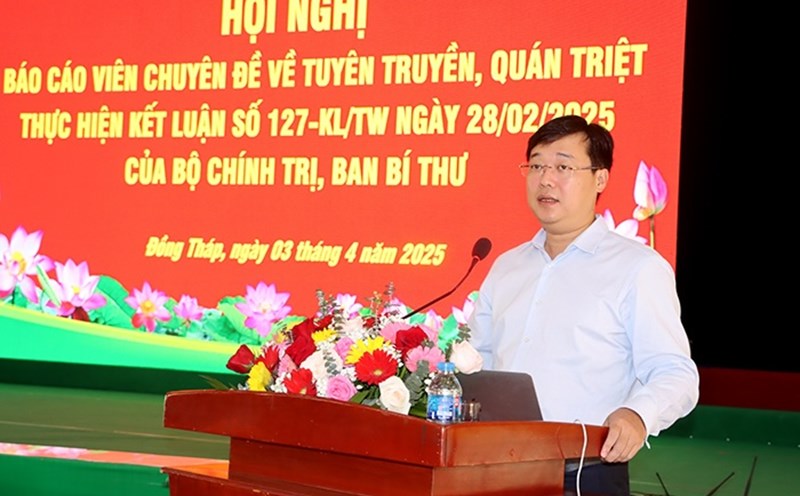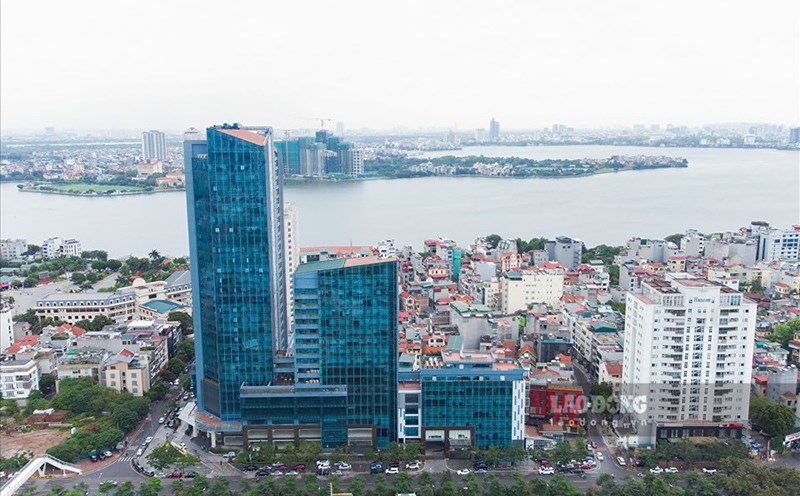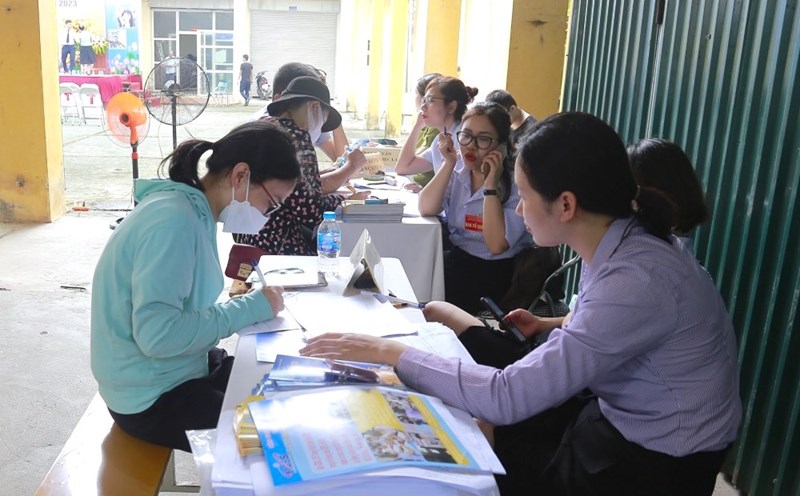In the afternoon of 3.4, at the meeting of the first quarter of 2025 between the Standing Committee of the City Party Committee, People's Council and People's Committee of Hanoi and districts, towns, Mr. Tran Dinh Canh - Director of the Department of Home Affairs reported the draft plan of arranging administrative units at the commune level in the city to consult with delegates.
The draft was built by the Department of Home Affairs, based on the guiding documents of the Politburo, the Secretariat and implementing the direction of the Standing Committee of the City Party Committee and Hanoi People's Committee.
According to the draft, the naming and renaming of communes and wards formed after the reorganization is proposed in 2 ways.
One is to name the Politburo's orientation, the Secretariat, the Standing Committee of the National Assembly. That is the name of the commune and ward that is newly formed after arrangement, it is easy to identify, brief, easy to read, easy to remember, ensure systematic and scientific; encourage the naming of the commune and ward according to the order number or by the name of the district administrative unit (before the arrangement) is attached to the order number to facilitate the digitalization and update of information data, for example: Thanh Xuan 1, Thanh Xuan 2, Dan Phuong 1, Dan Phuong 2 ...
The second is the proposal to name historical inner-city administrative units with revolutionary cultural and historical traditions, representing the country and the capital. Select 1 typical administrative unit to name, adjacent administrative units are named after other typical historical, cultural and revolutionary sites to avoid overlap. For example: Hoan Kiem (unit named Hoan Kiem); Dong Da (unit named Dong Da; unit named Kim Lien, unit named Van Mieu - Quoc Tu Giam).
The draft also sets out the principles for determining administrative centers. Accordingly, the city will choose an administrative center of one of the current commune-level administrative units as the administrative center of the new grassroots administrative unit.
The administrative center of the new administrative unit has a favorable geographical location, synchronous socio-economic infrastructure, especially the developed transportation system, easily connecting with other administrative units in the city, connecting the headquarters of the administrative unit and the community in that administrative unit.
The administrative center of the new administrative unit needs to have space for future development; in line with the socio-economic development orientation of the new administrative unit, ensuring national defense and security.
Regarding the criteria for identifying communal administrative units to arrange and draft the plan stated 2 contents. The first is to comply with the criteria of the Resolution of the Standing Committee of the National Assembly on the standards of the administrative unit and classifying administrative units. The second is to carefully consider the specific factors of historical, tradition, culture, ethnicity, religion, beliefs, customs, customs, geographical location, natural conditions, sub -regional, provincial, scale, economic development level, defense, political security, social order, transport infrastructure and information technology for the requirements of state management and economic development.
Regarding the expected number of commune-level administrative units, the draft states: "According to the Central Government's plan, the total number of commune and ward administrative units after the reorganization will decrease by about 50% compared to the total number of commune-level administrative units before the reorganization".
This is only a draft plan to be discussed at the Conference. In the coming time, based on the proposal report of the City People's Committee, the Standing Committee of the City Party Committee, the Standing Committee of the City Party Committee will agree on the policy on the views, goals, requirements, criteria and expected number of communal administrative units to arrange; direct the implementation of the process of collecting opinions of leaders of departments, agencies; Districts and towns on expected plans to arrange communal administrative units.
Based on the opinions of all levels, the City People's Committee completes the plan; organize the collection of people in accordance with the law; at the same time, carrying out the order and procedures for construction and approval of the Project on arranging the administrative unit to report to the Standing Committee of the City Party Committee, the Standing Committee of the City Party Committee, the Executive Committee of the City Party Committee; The City People's Committee submits to the City People's Council for promulgation of the Resolution to approve the policy before submitting to the Government.











